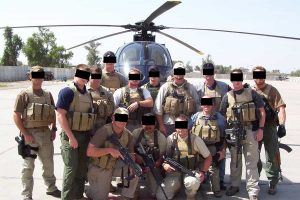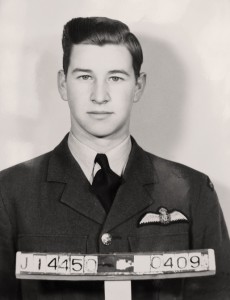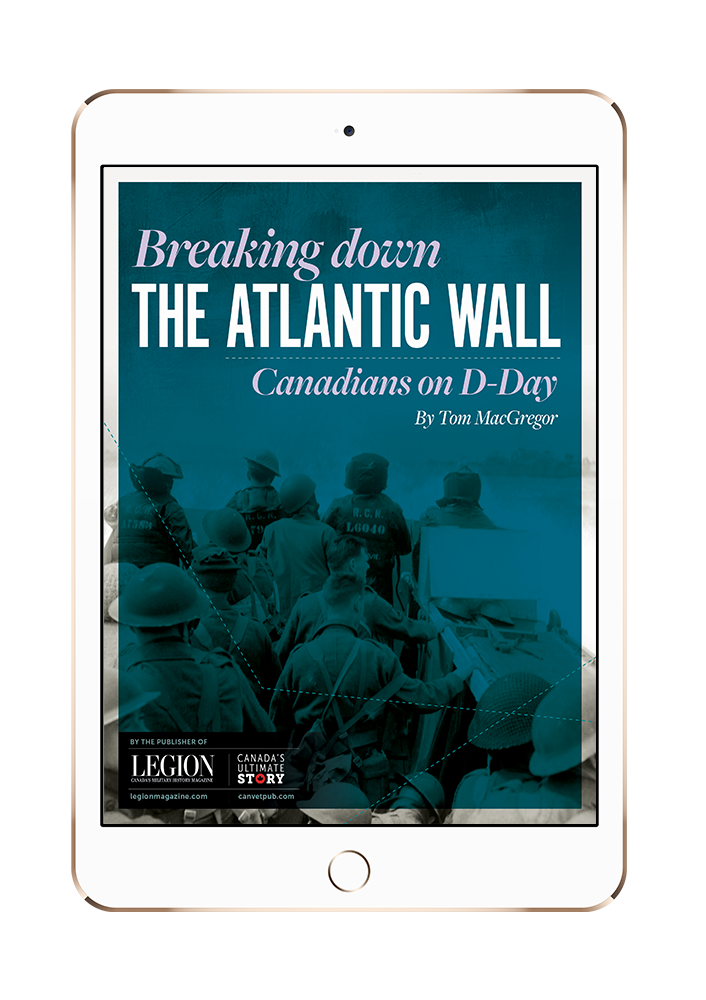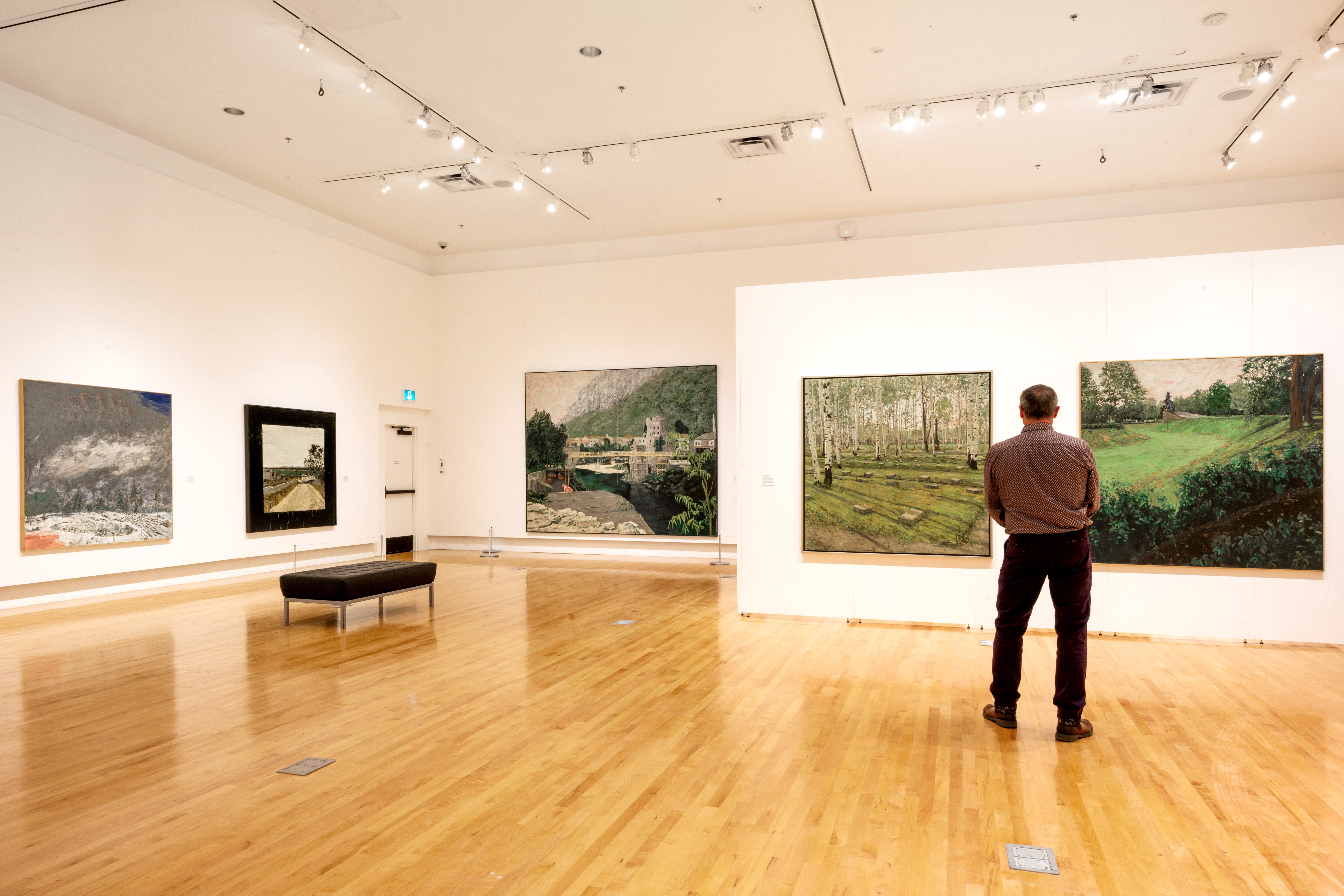
Dick Averns, curator of “WITNESS: Histories of Conflict in the War Art of Bill MacDonnell” views two paintings at one of Alberta’s Military Museums.
[Josie Chu]
Meanwhile, the second showcases a renowned regiment in “Far from Home: Princess Patricia’s Canadian Light Infantry 110 Years of Art.” Both explore the complexities of warfare through paint on canvas, inviting visitors to reflect on humanity at its very best and worst.
Curatorial co-ordinator Dick Averns spoke with Legion Magazine about both exhibits, as well as the role art plays in telling the story of war.

A portrait of Sergeant Percy John Ford by Canadian war artist Charles Comfort. [Canadian War Museum 19710261-2189, and PPCLI Museum and Archives]
The evolution of war art comes from numerous different historical standpoints. Within the military, having people who undertook reconnaissance and could do field sketches, maps and drawings was critical for tactical decisions in battle.
Famously, before photography, battles were typically depicted in a grand manner through painting. Sometimes artists were there, and sometimes they were not.
Other countries, from Egypt to Russia to North Korea, still use war art solely for propaganda purposes—art of the state—which Canada has moved away from.
Around 2006 or 2007, Canada itself committed to diversifying [war artist] media to include the likes of poetry, theatre and music. Actually, I was the first non-fiction writer to be deployed as a Canadian War artist. It’s these sorts of art forms that most people don’t really associate with war art. Canada is ahead of the pack.

Soviet Tank Graveyard, Camp Alamo, Afghanistan, 2008
[Josie Chu]
Bill MacDonnell—who is in his 80s—came to his practice through the study of history, as well as being a painter, and was drawn to sites of former conflict. His oeuvre has chartered many events of the 20th century, from the First World War to the Spanish Civil War to the Second World War and beyond. He’s also visited active war zones, including the former Yugoslavia and Afghanistan.
MacDonnell’s work is not like the traditional big battle scenes; rather, he looks at the unseen and often forgotten aspects of conflict. His powers of inquiry were incredible. He had a knack for locating and depicting pivotal sites of rupture.
His thesis has always addressed what he terms as cultural amnesia; in other words, the tendencies for society to forget. Perhaps MacDonnell felt that whilst art cannot necessarily change the world, there’s a responsibility for artists to portray the challenge of humanity repeating its follies intergenerationally, something he himself depicted on canvas, and we’re honoured to show at the exhibition.

Bill MacDonnell’s large, eerie, canvases span a century of modern conflict [Josie Chu]
MacDonnell had been part of a Canadian group show several years ago, but eschewed the opportunity of having a solo show, being a modest man. When that opportunity did materialize, I sought the family holdings and contacted other lenders on a local and national level. There were logistical challenges but likewise successes, including a visit to the Canadian War Museum to secure two loans. Other institutions and collections provided similar loans for the exhibition.
For “Witness,” the name is all about first-hand experience, imparting to audiences that the artist [in this case, MacDonnell] has actually been to these places and seen many of these sights. It also raises the great importance of us all witnessing.
Oftentimes, people do not see things for themselves. They are highly mediated. Painting is very different than looking at a photograph or the tendency for some people to see everything on a small screen. Conversely, MacDonnell’s paintings are large, most close to six feet square, and some are at the least nine by 10. So, there is a scale and an impact on audiences who come to see them in person.
To me, artists can say and do what soldiers and politicians often cannot.

“FAR FROM HOME: Princess Patricia’s Canadian Light Infantry, 110 Years of Art” [Josie Chu]
I assisted with that exhibition alongside lead curator, retired lieutenant-colonel Bill Bewick [a former officer of Princess Patricia’s Canadian Light Infantry (PPCLI)]. Bewick always understood the importance of war art for the regiment and, during the Yugoslav Wars, advertised for painters to cover it. MacDonnell replied. He and art student Danielle Ethier then travelled to Croatia—and thus ‘far from home.’
For the exhibition itself, Bewick knew there was a significant holding of war art at the PPCLI Museum and Archives, with many pieces embodying that same sense of witnessing. The collection includes the watercolours of Jack MacLaren from the First World War, artwork of Charles Comfort during the Second World War, paintings from the Korean War, and, of course, MacDonnell’s depictions.
There’s a considerable interconnection between “Witness” and “Far From Home,” and between the two Bills [MacDonnell and Bewick]. Both exhibition designs are such that one flows into the other; they’re not separate in almost any sense at all.
Fundamentally, their pairing is a match made in artistic heaven.
This abridged interview has been edited for brevity and clarity.
Advertisement
No related posts.










